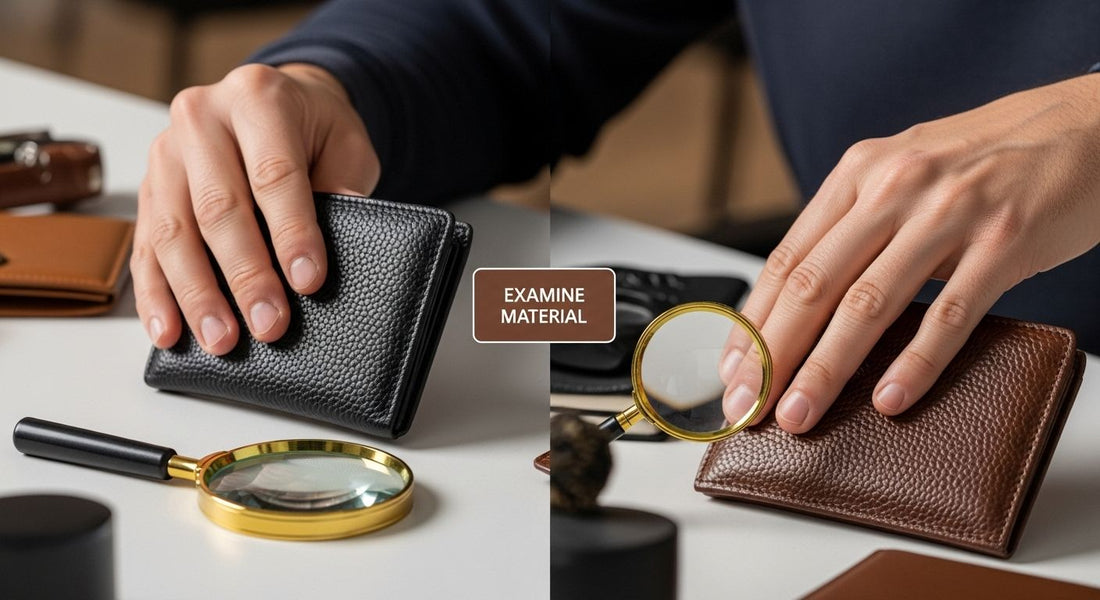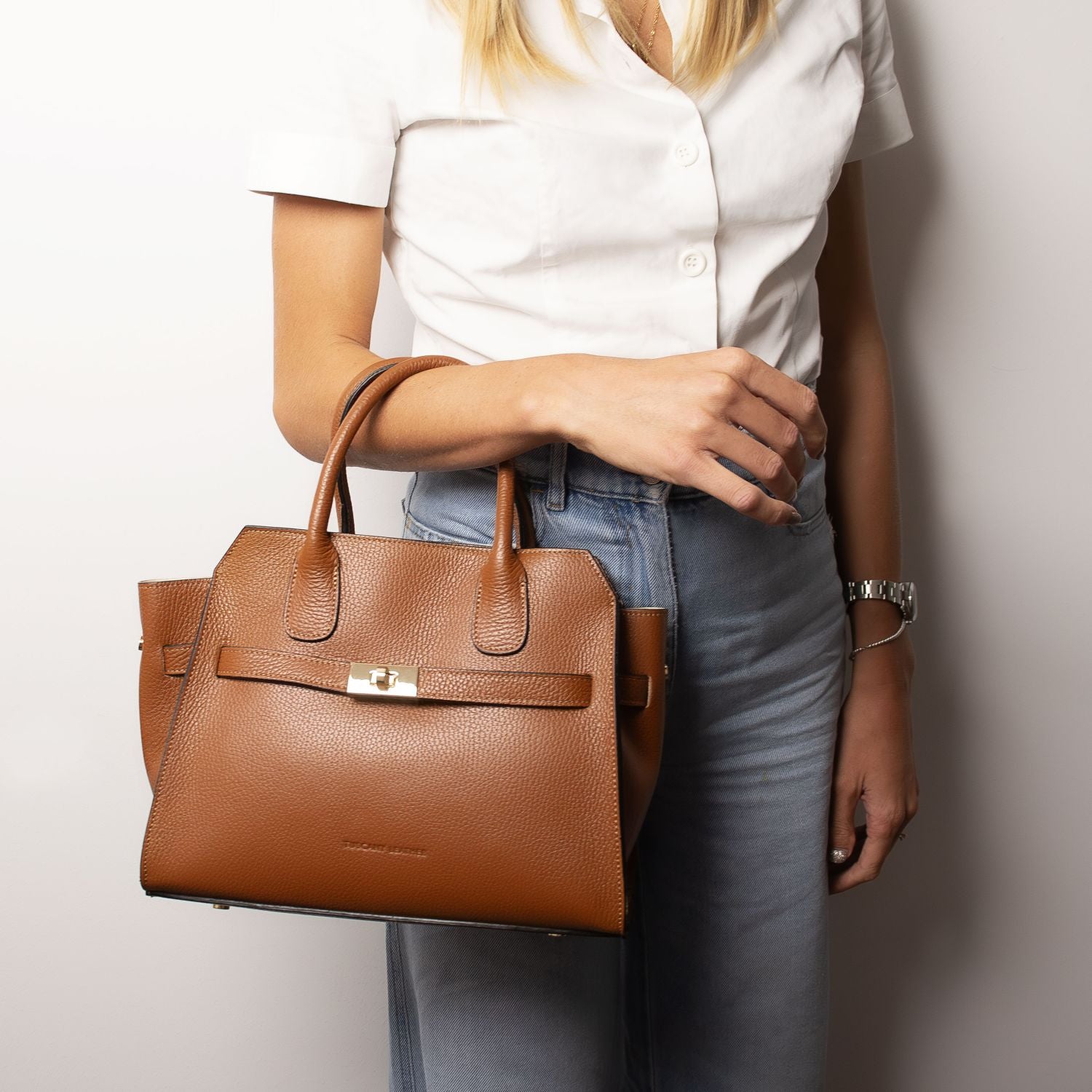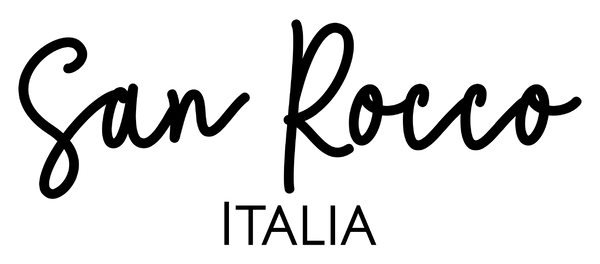
How to Spot Fake Leather: A Step-by-Step Guide
Share

Spotting fake leather can be surprisingly tricky and it is something many shoppers get wrong. More than 40 percent of buyers admit they cannot reliably tell real leather from imitation. Yet that number feels shocking because the differences are actually right at your fingertips. With a little know-how, anyone can uncover the secrets that separate genuine leather from the clever fakes flooding the shops.
Table of Contents
- Step 1: Examine The Material And Texture
- Step 2: Perform The Water Test
- Step 3: Check For Odour And Quality
- Step 4: Inspect The Stitching And Craftsmanship
- Step 5: Research The Brand And Product Details
- Step 6: Make An Informed Purchase Decision
Quick Summary
| Key Point | Explanation |
|---|---|
| 1. Examine texture and surface carefully | Authentic leather has unique texture and natural imperfections that distinguish it from synthetic materials. |
| 2. Conduct the water test cautiously | Genuine leather absorbs water slowly; synthetic leather either beads up or leaves wet marks. |
| 3. Evaluate smell and overall quality | Authentic leather has a rich, earthy scent and feels supple compared to the chemical smell and rigidity of fake leather. |
| 4. Inspect stitching for craftsmanship | Quality leather has even, tight stitching and well-finished edges, whereas fake leather displays inconsistent stitching. |
| 5. Research brand and product details | Verify leather authenticity by checking documentation, brand reputation, and product transparency regarding materials used. |
Step 1: Examine the Material and Texture
Spotting fake leather requires a keen eye and understanding of the material’s fundamental characteristics. When learning how to spot fake leather, your first and most critical step involves closely examining the material’s texture, surface quality, and inherent properties. Genuine leather carries unique markers that distinguish it from synthetic imitations.
Start by feeling the material’s surface carefully. Authentic leather possesses a distinct, slightly uneven texture with natural variations and subtle imperfections. Unlike manufactured materials, real leather will have slight irregularities that reflect its organic origin. Run your fingers across the surface and observe the nuanced grain patterns. Genuine leather will feel warm to the touch and have a soft, supple quality that synthetic materials cannot replicate.
According to Encyclopædia Britantica, true leather features natural imperfections and a non-uniform grain, whereas artificial leather typically displays a regular, machine-stamped pattern. Professional leather experts recommend performing a visual and tactile inspection by examining the material under good lighting. Look for micro-variations in the surface that indicate authentic leather. Genuine hide will showcase slight wrinkles, pores, and inconsistent grain patterns that machine-produced materials cannot authentically reproduce.

Pay special attention to the edges and corners of the leather item. Authentic leather will have a more organic, slightly rough edge with natural fibre characteristics. Fake leather often appears too perfect, with extremely smooth or overly uniform edges that lack the subtle complexity of real animal hide. When examining the material, consider its flexibility and how it responds to gentle manipulation. Real leather will softly fold and create natural creases, while synthetic leather tends to crack or maintain a more rigid structure.
The following table offers a side-by-side comparison of authentic versus fake leather characteristics, making it easy to spot the differences discussed in the article.
| Feature | Authentic Leather | Fake Leather |
|---|---|---|
| Surface Texture | Uneven, natural variations and imperfections | Overly smooth and uniform |
| Grain Pattern | Non-uniform, micro-variations | Machine-stamped, repeating patterns |
| Water Absorption | Absorbs water slowly, leaves temporary dark spot | Water beads up or leaves persistent wet mark |
| Smell | Earthy, musky, rich scent | Chemical, plastic-like odour |
| Edge Finish | Rough, organic, fibrous edges | Too smooth or unnaturally perfect |
| Stitching | Even, tight, hand or quality machine-stitched | Inconsistent, machine-made, possibly loose |
| Flexibility | Soft, supple, develops natural creases | Rigid, prone to cracking, less flexible |
Remember that mastering how to spot fake leather requires practice and developing a discerning eye. Trust your senses and take time to carefully examine each piece. By understanding these fundamental characteristics, you can confidently distinguish between genuine leather and its artificial counterparts.
Below is a concise checklist table to help verify whether a leather item is genuine, summarising the verification steps described throughout the guide.
| Verification Step | What to Check | Authentic Leather Indicator |
|---|---|---|
| Surface Texture | Feel and appearance of surface | Slight unevenness, natural variations |
| Grain Pattern | Visual inspection under good lighting | Irregular, unique grain patterns |
| Edge and Corner Examination | Look at edge finish and fibre characteristics | Organic, slightly rough edges |
| Water Absorption Test | Place a drop of water on an inconspicuous spot | Slow absorption, gradual darkening |
| Odour Assessment | Smell the item carefully | Earthy, musky, natural scent |
| Stitching and Craftsmanship | Inspect seams, stitch density, thread quality | Even stitching, strong, well-finished edges |
| Documentation & Brand Research | Check for certificates, tags, detailed material info | Transparent information, reputable source |
Step 2: Perform the Water Test
After examining the material and texture, the water test becomes your next reliable method for determining leather authenticity. This simple yet effective technique helps reveal critical differences between genuine leather and synthetic alternatives. The water test leverages the unique absorption and interaction properties of real leather.
To conduct the water test, select a small, inconspicuous area of the leather item. Use a clean dropper or the tip of your finger to place a single drop of water onto the surface. Observe how the material responds in the next few moments. Genuine leather will absorb the water droplet slowly and gradually, creating a slightly darkened area that will mostly disappear as the moisture evaporates. This absorption occurs because real leather is a natural, porous material with microscopic openings that allow liquid to penetrate.
According to Scientific Leather Research, authentic leather demonstrates a nuanced moisture interaction distinct from synthetic materials. Fake leather, by contrast, will typically display one of two characteristics: the water will either bead up and sit on the surface without absorption, or it will create a visible wet mark that does not blend or disappear naturally. Synthetic leather often has a plastic-like coating that prevents water penetration, revealing its artificial composition.
Be cautious and strategic when performing this test. Always choose a location that is not prominently visible, such as an interior seam or hidden section. Some delicate leather items might be sensitive to moisture, so use minimal water and gently blot the area afterwards. If you are testing a valuable or vintage leather piece, consider consulting a professional leather expert who can perform more precise authentication techniques.
Remember that while the water test is helpful, it should not be your sole method of determining leather authenticity. Combine this technique with the texture examination from the previous step and subsequent authentication methods for the most comprehensive assessment. Your goal is to build a holistic understanding of the material’s characteristics and origins.
Step 3: Check for Odour and Quality
Authentic leather carries a distinctive sensory profile that synthetic materials cannot replicate. Odour and quality assessment provides another critical method for determining whether your leather item is genuine. This step involves engaging multiple senses to evaluate the material’s true nature.
Begin by bringing the leather item close and taking a gentle, careful sniff. Genuine leather emits a rich, earthy, and natural fragrance that stems from its organic origins. The scent should be warm and slightly musky, reminiscent of natural animal hide. Avoid intense sniffing that might damage delicate leather surfaces. Instead, allow the aroma to subtly reveal itself. Synthetic leather, by contrast, will typically have a sharp, chemical smell similar to plastic or artificial materials.
According to Walsall Leather Skills Centre, authentic leather possesses a deep, complex fragrance that distinguishes it from imitation materials. Beyond smell, examine the item’s overall quality by assessing its physical characteristics. Genuine leather should feel supple yet structured, with a soft texture that yields gently when pressed. Run your hands across the surface, feeling for natural variations and a slight resistance that indicates authentic craftsmanship.
Quality assessment extends beyond immediate sensory perception. Inspect the leather’s edges and seams carefully. Authentic leather will show natural fiber structures and subtle imperfections, whereas fake leather often appears unnaturally uniform or has visible synthetic backing. Pay attention to how the material moves and folds. Real leather develops a unique patina over time, softening and showing gentle wear marks that enhance its character. Synthetic leather, in comparison, tends to crack, peel, or maintain a rigid appearance.
Remember that mastering leather authentication requires practice and patience. Each piece tells a unique story through its texture, smell, and response to touch. By developing a discerning approach and trusting your senses, you can confidently distinguish between genuine leather and its artificial counterparts. The combination of visual, tactile, and olfactory examination provides a comprehensive method for verifying leather authenticity.
Step 4: Inspect the Stitching and Craftsmanship
Examining the stitching and craftsmanship represents a critical step in determining leather authenticity. Detailed inspection reveals insights into the item’s quality, construction, and genuine nature that go far beyond surface appearances. Professional leather experts understand that true craftsmanship tells a story of precision, care, and expertise.
Begin by carefully examining the stitching along seams and edges. Authentic leather items feature consistent, even stitches that are tight and uniform. Look closely at the thread quality and stitch density. Genuine leather products typically showcase hand-stitched or meticulously machine-sewn details with minimal variation between stitches. The thread should appear strong, with no loose ends or irregular spacing. Fake leather often displays inconsistent stitching that looks machine-generated without the subtle variations found in high-quality craftsmanship.
According to The Walsall Leather Skills Centre, true leather craftsmanship involves intricate details that synthetic materials cannot replicate. Pay special attention to the corners and stress points of the item. Genuine leather will have reinforced stitching that follows the natural grain and contours of the material. The stitches should blend seamlessly with the leather, appearing almost like an integral part of the design rather than a separate element.
Inspect the edges and seams with particular care. Authentic leather items demonstrate exceptional attention to detail, with clean, carefully finished edges. The leather should appear to be a single, continuous piece with minimal visible joins. Look for signs of hand-finishing, such as slightly irregular but purposeful stitching that indicates skilled craftsmanship. Synthetic leather typically shows more uniform, machine-perfect edges that lack the nuanced character of genuine leather.
Remember that craftsmanship tells a story. Each stitch, each carefully constructed seam represents the skill and tradition behind genuine leather production. By developing a discerning eye and taking time to examine the intricate details, you can confidently distinguish between mass-produced imitations and truly exceptional leather craftsmanship.
 Your careful inspection reveals the difference between mere manufacturing and genuine artisan work.
Your careful inspection reveals the difference between mere manufacturing and genuine artisan work.
Step 5: Research the Brand and Product Details
Researching brand and product details provides the final layer of authentication in determining genuine leather. Thorough investigation transforms your assessment from sensory examination to comprehensive verification. This step leverages digital resources and expert knowledge to confirm the leather’s true origin and quality.
Begin by examining the product’s documentation and packaging. Authentic leather items typically include detailed information about leather type, origin, and manufacturing process. Look for specific terminology like full-grain, top-grain, or vegetable-tanned leather. These precise descriptions indicate a manufacturer’s commitment to transparency and quality. Check for manufacturer certificates, authenticity tags, or embedded serial numbers that can be verified through official channels.
According to The Walsall Leather Skills Centre, understanding leather terminology is crucial for accurate identification. Investigate the brand’s reputation by exploring their official website, customer reviews, and industry recognition. Genuine leather manufacturers often provide detailed information about their sourcing, tanning processes, and craftsmanship. Look for brands that openly discuss their leather selection, highlighting specific details about animal sources, tanning techniques, and ethical production practices.
Utilize online resources to cross-reference product information. Professional leather forums, expert review sites, and manufacturer documentation can provide additional insights. Compare the item’s characteristics with established standards for high-quality leather. Pay attention to price points traditional manufacturers ask for genuine leather products, as significantly lower prices might indicate synthetic alternatives. Contact the manufacturer directly if you have specific questions about the leather’s authenticity, as reputable brands will gladly provide detailed information about their products.
Remember that research is your most powerful authentication tool. By combining careful investigation with the previous sensory examinations, you create a comprehensive approach to identifying genuine leather. Your diligence protects you from purchasing inferior products and ensures you invest in authentic, high-quality leather crafted with genuine expertise and care.
Step 6: Make an Informed Purchase Decision
Making an informed purchase decision represents the culmination of your leather authentication journey. Careful consideration transforms your research and sensory examination into a confident, well-reasoned choice that protects your investment and ensures genuine quality.
Evaluate the entire collection of evidence you have gathered through previous authentication steps. Authentic leather should consistently demonstrate quality across multiple assessment criteria. Compare the item’s characteristics against the comprehensive checklist of genuine leather markers you have developed. Consider the product’s overall value, not just its immediate appearance. A slightly more expensive piece with proven authenticity will outlast and outperform cheaper imitations, providing superior long-term value.
According to Sustainable Style Organisation, smart leather purchasing involves more than just identifying genuine materials. Look for additional quality indicators such as third-party certifications that verify ethical sourcing and production standards. Reputable brands often provide transparency about their manufacturing processes, leather origins, and environmental commitments. Consider supporting manufacturers who demonstrate responsible practices and provide detailed documentation about their leather’s provenance.
Pay close attention to your personal requirements and intended use. A high-quality leather piece should align with your practical needs while meeting aesthetic preferences. Consider factors like durability, maintenance requirements, and potential wear patterns. Genuine leather develops a beautiful patina over time, telling a unique story of usage and care. Examine how the item might integrate into your existing collection and lifestyle, ensuring it represents a meaningful, long-term investment rather than a fleeting purchase.
Remember that purchasing authentic leather is an investment in craftsmanship, quality, and timeless design. Trust the comprehensive assessment you have conducted, combining sensory examination, detailed research, and careful consideration. Your informed decision reflects not just a purchase, but an appreciation for genuine quality and thoughtful consumption.
Experience Authentic Italian Leather With Confidence
Your journey to master how to spot fake leather highlights a real challenge. You want to invest in items made from genuine, high-quality leather and avoid being misled by imitations. After learning to examine the material, perform a water test, check odour and craftsmanship, and thoroughly research the source, you deserve a collection that honours your dedication to authenticity.
At San Rocco Italia, every handbag and leather accessory is meticulously handcrafted by skilled Italian artisans using only premium full-grain leather. Our careful curation ensures that every item passes the highest standards for quality, texture, and timeless design—values you learned to appreciate in each step of your guide.

Looking for true peace of mind in your next purchase? Let your new knowledge lead you to a trusted source. Browse San Rocco Italia today and discover leather goods that embody genuine craftsmanship and certified authenticity. Your search for the real thing ends here—shop now to invest in a piece that will last a lifetime.
Frequently Asked Questions
How can I tell if leather is genuine or fake?
To spot genuine leather, examine its texture and surface characteristics. Authentic leather has natural imperfections, a warm feel, and a slightly uneven texture. In contrast, fake leather often appears overly smooth and uniform.
What is the water test for determining leather authenticity?
The water test involves placing a drop of water on the leather surface. Genuine leather absorbs the water slowly and creates a dark spot that fades as it dries. If the water beads up or creates a visible wet mark that doesn’t disappear, it is likely fake leather.
What should I look for when inspecting leather stitching?
When examining stitching, authentic leather should have consistent, even stitches that are strong and tight, often highlighting careful craftsmanship. Fake leather may show irregular or loose stitches that lack the nuanced touch of genuine leather craftsmanship.
Does genuine leather have a specific smell?
Yes, genuine leather has a rich, earthy scent that is warm and musky due to its natural origins. Fake leather typically emits a sharp, chemical odour that resembles plastic or synthetic materials.


